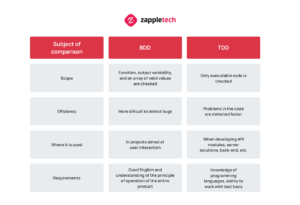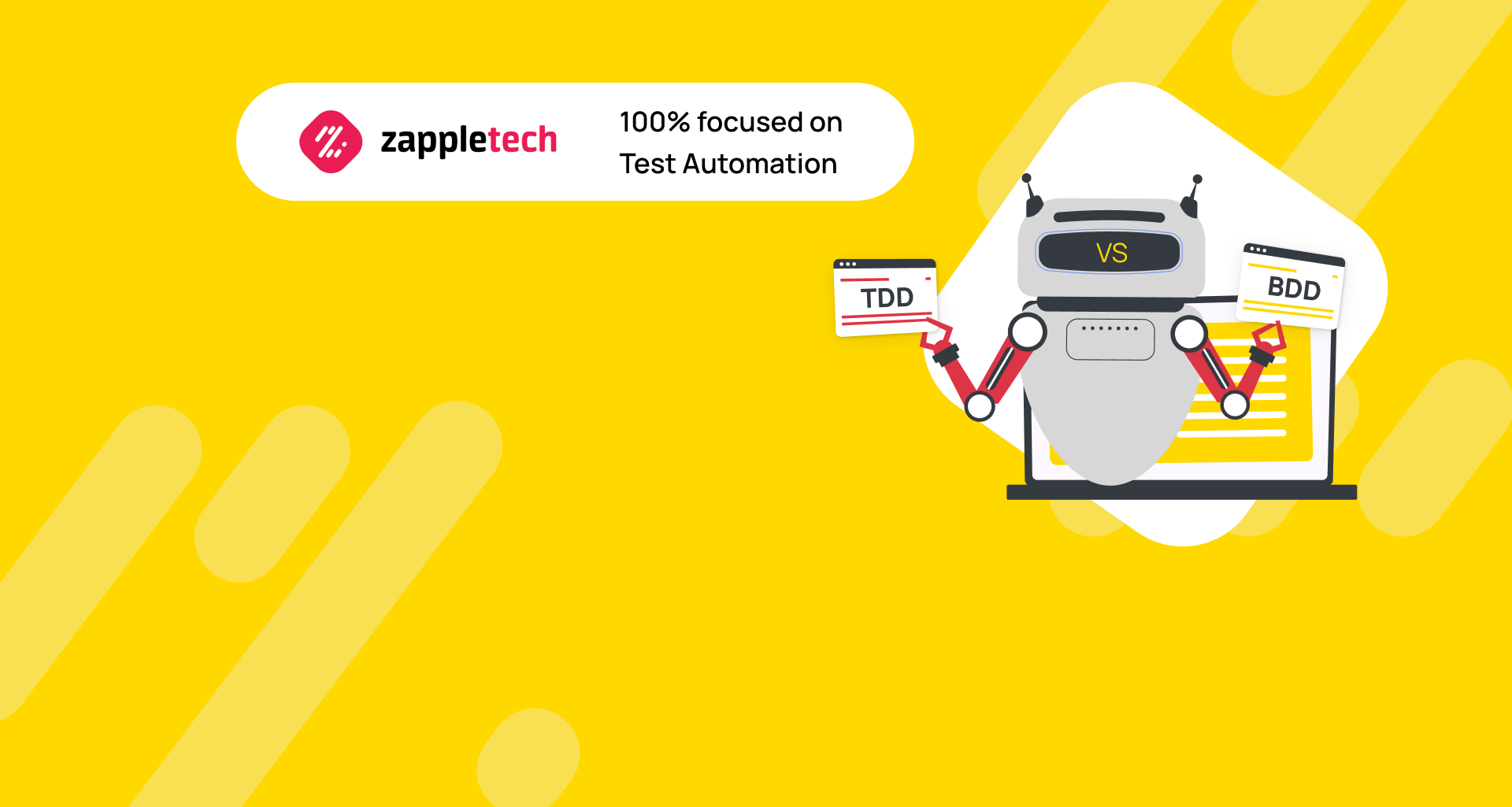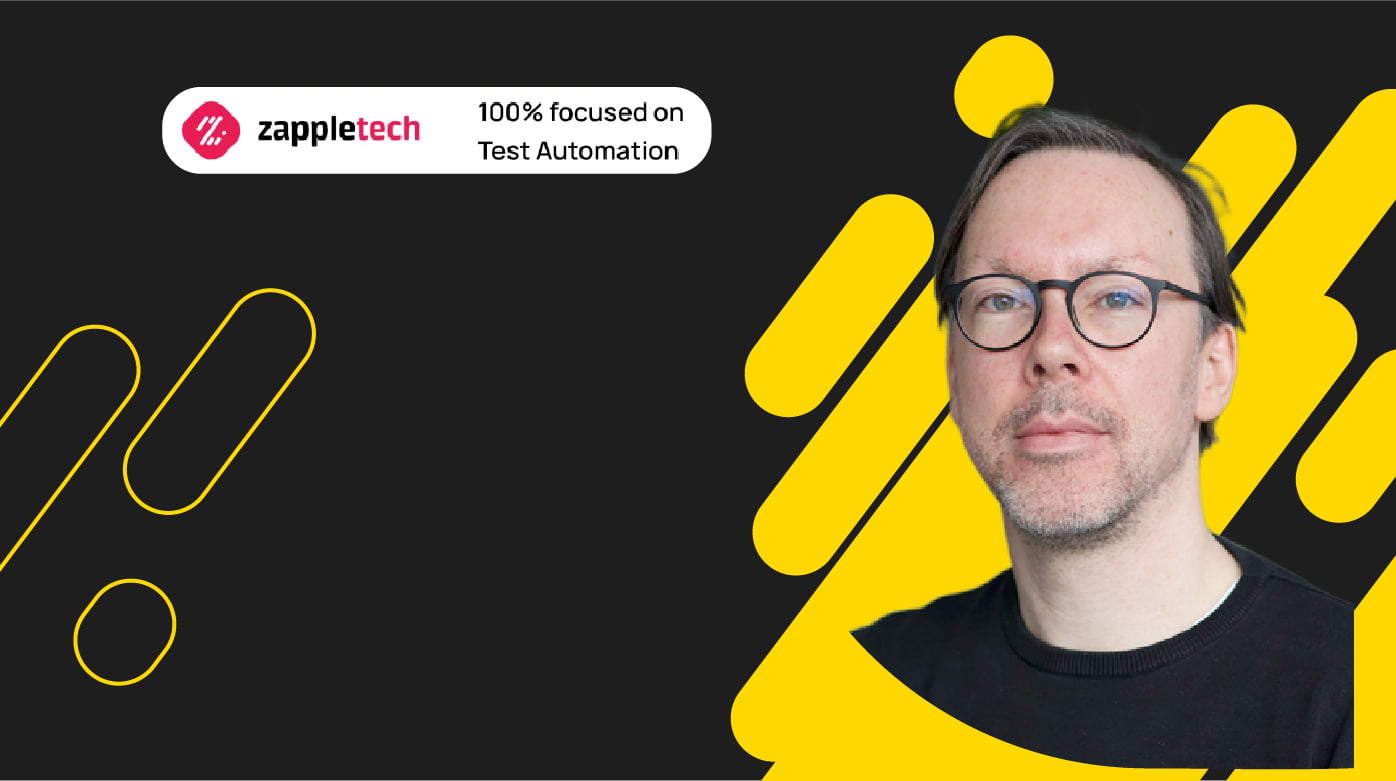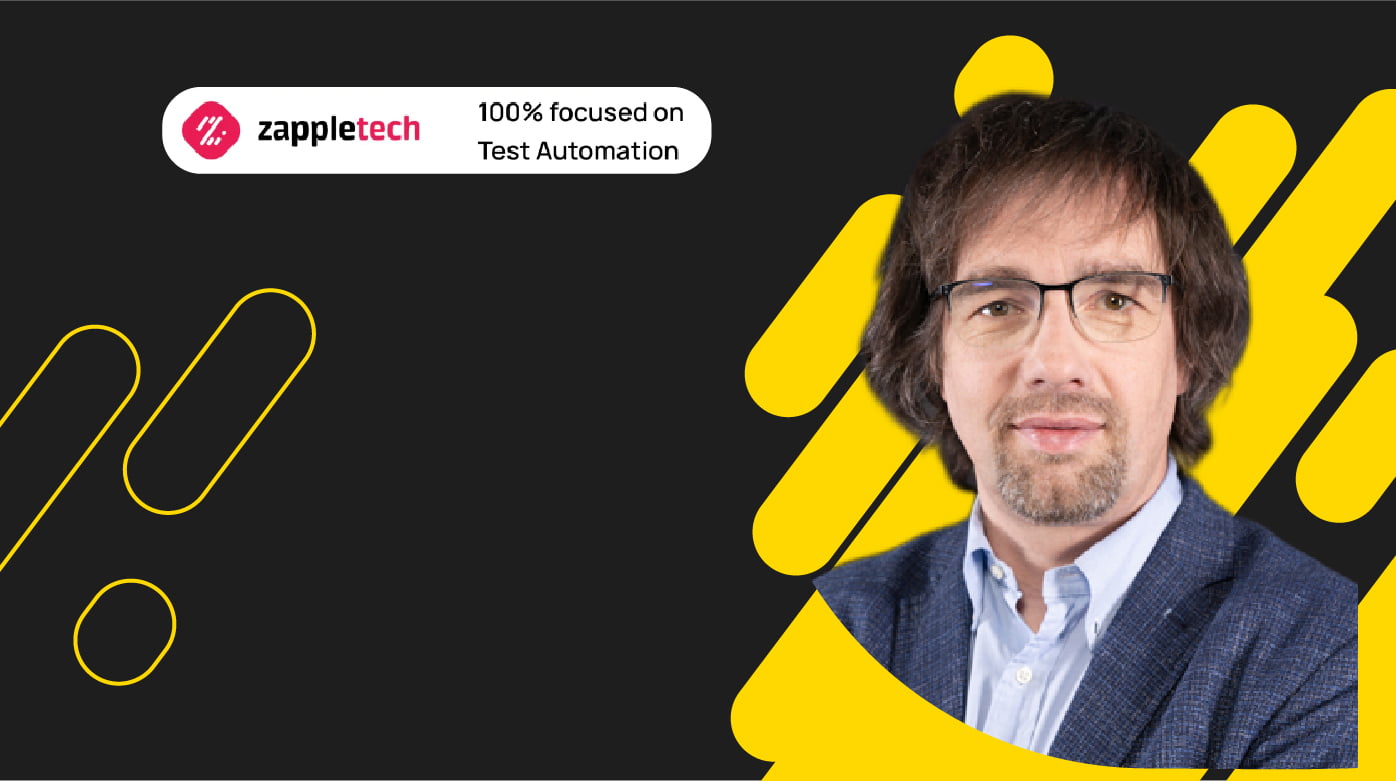Testing is an integral part of modern development methodologies, playing a crucial role in ensuring high-quality IT products. It begins even before the start of work and continues rigorously until the product’s release. This comprehensive approach has significantly contributed to the service market based on agile methodologies, which has reached an impressive $20 billion, according to FNFResearch. Projections indicate that this market will expand by an additional $10 billion by 2026, with a CAGR of 18%.
Among the most common development techniques employed today are TDD vs BDD. While many IT experts mistakenly consider TDD (Test-Driven Development) and BDD (Behavior-Driven Development) to be opposites, they are, in fact, complementary approaches within the same development process. Both methodologies emphasize the importance of testing but focus on different aspects—TDD on code correctness from the developer’s perspective and BDD on the system’s behavior from the end-user’s point of view.
ZappleTech has thoroughly analyzed the benefits of each approach, exploring how TDD vs BDD can be leveraged to improve product quality. By understanding these methodologies, you can learn how to seamlessly integrate them into your project, enhancing your development workflow and ultimately delivering a superior product. Today, you will gain insights into these methods, their individual impacts on product quality, and strategies for combining them effectively within your development practices.
Table of Contents
TDD vs. BDD: Definitions, Features, and Differences
TDD and BDD stand for test-driven development and behavior-driven development, respectively. The first method is based on preliminary testing of each function, and the second on a user interaction scenario. It sounds complicated, but in practice, they are similar.
The essence of each method is writing cases and scenarios before work begins. However, if TDD requires developer’s activities only, then in BDD, all the project participants are involved: the developer, the customer, and QA specialists. These are integral components of the Agile methodology that optimize development and speed it up. Logically, it should be exactly the opposite because documentation and the initial creation of test cases supplement the classical process. Let’s visually compare the differences between these types of work on an IT product.
In TDD, the developer begins by writing test cases for a specific function. The function is then coded to pass these tests, ensuring that the code works as expected from the outset. This method primarily involves the developer and emphasizes the internal logic of the application, making it an integral part of Agile practices that aim to optimize and speed up the development cycle.
Choose TDD if your priority is to ensure code accuracy and catch errors early. Opt for BDD when you need clear communication among developers, testers, and non-technical stakeholders, aligning development with business goals.Sergey AlmyashevCOO, ZappleTech Inc.
On the other hand, BDD extends this approach by involving a broader range of project stakeholders, including developers, QA specialists, and even customers. This collaboration ensures that the development process aligns more closely with the desired behavior of the application from a user’s perspective. BDD encourages writing scenarios in plain language, often using a Gherkin syntax, which makes it accessible to non-technical team members. This inclusivity helps ensure that the final product meets user expectations, ultimately bridging the gap between technical requirements and business needs.
Both TDD and BDD play crucial roles in Agile environments by promoting iterative development and early detection of issues. However, the primary difference lies in their focus: TDD is developer-centric and centers around code correctness, while BDD is user-centric and revolves around the behavior of the application as experienced by the end-user.
Understanding the distinctions between TDD vs BDD is essential for teams aiming to choose the most appropriate methodology for their projects. For example, while TDD may be ideal for teams looking to ensure code accuracy through rigorous testing, BDD is beneficial when the project requires detailed collaboration between technical and non-technical stakeholders. In practice, both methodologies can be used complementarily, leveraging TDD’s test-first approach and BDD’s emphasis on behavior-driven scenarios to create robust, user-aligned applications.
By visually comparing TDD vs BDD, teams can better appreciate their respective strengths and decide which approach, or combination thereof, best suits their development needs. Ultimately, both methods aim to deliver high-quality software that meets or exceeds user expectations, making them valuable tools in a developer’s toolkit.
Test-driven development vs. behavior-driven development: difference table
According to CapGemini, 63% of businesses are interested in improving the quality of customer experience through their IT solutions, highlighting the critical role of software development methodologies in achieving this goal. Trends from 2021-2022 have set new expectations for companies that provide services to consumers, driving the demand for optimized applications that meet the ever-evolving standards of today’s market. This is where methodologies like TDD and BDD come into play. Both Test-driven development (TDD) and Behavior-driven development (BDD) are pivotal in enhancing the user experience, though they approach this goal differently.
TDD vs BDD: At its core, TDD focuses on writing tests before the actual code is developed, guiding the design and ensuring that every feature works as intended from the start. This approach is particularly beneficial in identifying bugs early in the development process, thus reducing the cost and time required for fixes later on. Conversely, BDD extends this concept by incorporating a more collaborative approach where tests are written in plain language, making them accessible to non-developers, including stakeholders and QA teams. This ensures that the software not only functions correctly but also aligns closely with business requirements.
A difference table between TDD and BDD can further clarify how these methodologies diverge in practice. For instance, TDD emphasizes the technical correctness of the code, while BDD prioritizes the fulfillment of user stories and behaviors. By comparing TDD vs BDD, teams can better decide which methodology aligns with their project goals, whether it’s achieving rigorous code reliability or ensuring that development stays in tune with user expectations. Both TDD and BDD offer unique advantages, but the choice ultimately depends on the specific needs of the development team and the project at hand.
Differences between these approaches:

As you can see, both approaches to development have similar goals but radically differ in implementation. If TDD tests are written by developers for developers, then BDD uses a “human” interpretation of cases into general English. As a matter of fact, these differences are at the same time the advantages of the described methods, but we will consider them in more detail later.
Features of writing test scripts
The development of test scripts in TDD involves creating and automating tests for specific functions and code sections. This approach ensures that each component is tested individually, with examples of use and an execution algorithm tailored to the implemented functionality. A procedure is considered successful when each line of code is processed sequentially, yielding correct results without errors. This systematic testing helps developers catch bugs early and refine the code continuously, adhering to the TDD methodology.
In contrast, BDD focuses on using verbal descriptions of actions, processes, and outcomes to create test cases and scenarios. For instance, a BDD scenario might state, “When entering the user’s account, the login field accepts only English letters and numbers.” In this scenario, inputs like “zapplet3ch” would be valid, while “z@ppletech” would be invalid. The developer’s task, following the BDD approach, is to refine the code so that any input considered incorrect is rejected by the program. This emphasis on clear, human-readable scenarios helps bridge the gap between technical and non-technical stakeholders, enhancing collaboration and understanding.
When comparing TDD vs BDD, it’s essential to consider the distinct approaches to writing test scripts. TDD prioritizes technical correctness through automated tests, while BDD emphasizes behavior and stakeholder communication, using scenarios that align with user expectations and business requirements. Both methodologies aim to improve software quality, but the choice between TDD vs BDD often depends on the project’s needs and the team’s preferences for collaboration and communication.
Product quality due to the difference between TDD and BDD
Among respondents to the CapGemini survey, 63% seek to improve the quality of the user experience with their products, and 61% aim to improve their apps through QA. Modern trends and quality control specialists approve the BDD method, considering it the most practical in terms of usability of IT products. The user-oriented approach to development and testing ensures the correct operation of the software in all use cases.
Don’t be afraid to combine TDD and BDD. Use TDD for detailed, low-level testing, and BDD for higher-level behavior and user-centric scenarios. This combination can help you cover more ground and deliver better quality software.Mykhailo PoliarushCEO, ZappleTech Inc.
On the contrary, TDD aims to test the functionality without worrying about the user experience. That’s why this approach is used to develop program components unavailable for users. These are various integrations with network modules, back-end components, databases, etc. Due to the high efficiency of the method and good speed of finding bugs, it is rightfully considered the favorite of most IT companies for full-stack development.
Combining BDD and TDD methods within the project: is it cost-effective?
How does it work?
The project participants are divided into 2 groups: developers and testers with an operational developer. The first group works adhering to the TDD principle, checking the code before programming and after implementing each element. The second group works using the BDD approach, describing test cases and checking them several times, focusing on the changes made by developers.
In fact, there are many options for combining, and each individual team of performers works according to the most convenient methodology and scenario.
What connects both methods?
It is not difficult to guess that a common element for TDD and BDD is testing. It accompanies the project from planning to the final delivery of the release version to the customer. Only the approach to implementing elements differs. Usually, dedicated QA teams successfully combine both methods, coordinating with the development team.
Difficulties only arise when creating a detailed roadmap and preparing cases, scenarios, and tools for testing. It’s because TDD requires test cases for missing features, while BDD requires an understanding of what functionality will be implemented and how it should work. Most of the other joint tasks of QA and developers are automated and need timely updating of the product code only.
How dedicated QA teams optimize development using TDD and BDD approaches?
It’s no secret that the effectiveness of development and testing depends on the qualifications of performers. Since the market is now oversaturated with freelancers and startup IT organizations, it is not easy to single out the best in terms of price/quality ratio. Even the viability of a startup MVP is at risk if specialists cannot provide a decent level of engagement and skills.
If you’re new to these methodologies, start with TDD to get comfortable with writing tests first. Once you have a grasp, incorporate BDD practices to enhance collaboration and refine how your application behaves from a user perspective.Sergey AlmyashevCOO, ZappleTech Inc.
We recommend not going to extremes but trusting the QA process to industry experts. ZappleTech provides a full range of quality control services. By delegating this to our specialists, you free up your resources to perform major business tasks. With us, your project will hit the virtual market in time, and its quality will satisfy your customers. Please contact our manager for consultation and ordering the services of QA ambassadors!






